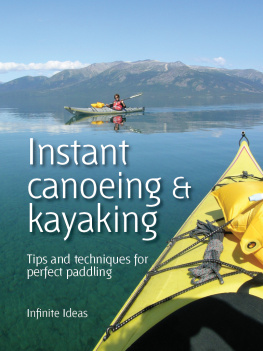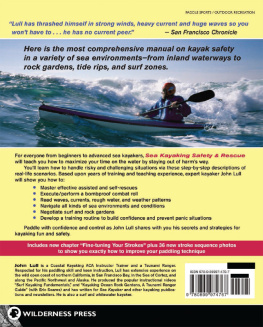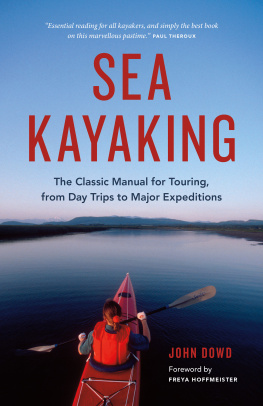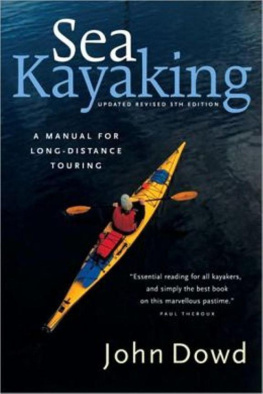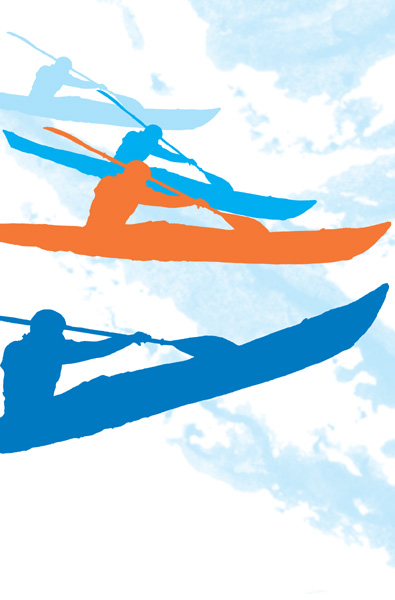

Copyright 2014 by International Marine/McGraw-Hill Education, LLC. All rights reserved. Except as permitted under the United States Copyright Act of 1976, no part of this publication may be reproduced or distributed in any form or by any means, or stored in a database or retrieval system, without the prior written permission of the publisher.
ISBN: 978-0-07-177985-2
MHID: 0-07-177985-X
The material in this eBook also appears in the print version of this title: ISBN: 978-0-07-177009-5, MHID: 0-07-177009-7.
E-Book conversion by CodeMantra
Version 1.0
All trademarks are trademarks of their respective owners. Rather than put a trademark symbol after every occurrence of a trademarked name, we use names in an editorial fashion only, and to the benefit of the trademark owner, with no intention of infringement of the trademark. Where such designations appear in this book, they have been printed with initial caps.
McGraw-Hill Education eBooks are available at special quantity discounts to use as premiums and sales promotions or for use in corporate training programs. To contact a representative please visit the Contact Us page at www.mhprofessional.com.
TERMS OF USE
This is a copyrighted work and McGraw-Hill Education and its licensors reserve all rights in and to the work. Use of this work is subject to these terms. Except as permitted under the Copyright Act of 1976 and the right to store and retrieve one copy of the work, you may not decompile, disassemble, reverse engineer, reproduce, modify, create derivative works based upon, transmit, distribute, disseminate, sell, publish or sublicense the work or any part of it without McGraw-Hill Educations prior consent. You may use the work for your own noncommercial and personal use; any other use of the work is strictly prohibited. Your right to use the work may be terminated if you fail to comply with these terms.
THE WORK IS PROVIDED AS IS. McGRAW-HILL EDUCATION AND ITS LICENSORS MAKE NO GUARANTEES OR WARRANTIES AS TO THE ACCURACY, ADEQUACY OR COMPLETENESS OF OR RESULTS TO BE OBTAINED FROM USING THE WORK, INCLUDING ANY INFORMATION THAT CAN BE ACCESSED THROUGH THE WORK VIA HYPERLINK OR OTHERWISE, AND EXPRESSLY DISCLAIM ANY WARRANTY, EXPRESS OR IMPLIED, INCLUDING BUT NOT LIMITED TO IMPLIED WARRANTIES OF MERCHANTABILITY OR FITNESS FOR A PARTICULAR PURPOSE. McGraw-Hill Education and its licensors do not warrant or guarantee that the functions contained in the work will meet your requirements or that its operation will be uninterrupted or error free. Neither McGraw-Hill Education nor its licensors shall be liable to you or anyone else for any inaccuracy, error or omission, regardless of cause, in the work or for any damages resulting therefrom. McGraw-Hill Education has no responsibility for the content of any information accessed through the work. Under no circumstances shall McGraw-Hill Education and/or its licensors be liable for any indirect, incidental, special, punitive, consequential or similar damages that result from the use of or inability to use the work, even if any of them has been advised of the possibility of such damages. This limitation of liability shall apply to any claim or cause whatsoever whether such claim or cause arises in contract, tort or otherwise.

Contents
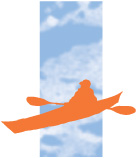
Acknowledgments
I am especially grateful to all of those kayakers whose mishaps brought them first to Sea Kayaker magazine and then again to these pages. It is as easy for them as it is for us to look back and see what they could have done differently to avoid the trouble they found themselves in. These stories arent news reports. Most come from the people who suffered the consequences of their mistakes, yet they still have the compassion for the rest of us to share their stories as cautionary tales for the benefit of other kayakers. Like you and me, they didnt intend or expect to come to grief. While it is easy to avoid shortcomings in equipment or lapses in judgment, it is not so easy to escape being human. We all make mistakes.
Thanks to Molly Mulhern of International Marine for patience and persistence through the years between her suggesting we do this book and my delivering it to her. A special thanks also goes to Kat Wertzler, the assistant editor at Sea Kayaker. She was instrumental in gathering and formatting materials for the book and keeping track of all of the contributors. Without her considerable skills and cheerful can-do attitude, this book would not have happened.
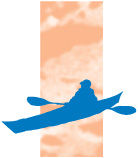
Preface
Christopher Cunningham
F ollowing the publication of Deep Trouble in 1997 I heard from many kayakers who had read the book and said it put them on a path to safer paddling practices. Several of those who found the book valuable bought five or six copies at a time and handed them out to friends and acquaintances who were just getting into kayaking. Deep Trouble also had a profound effect on my own approach to kayaking. I was familiar with all of the stories in the book, having read them as articles in Sea Kayaker, and I took to heart much of the advice offered in the Lessons Learned. I credit those articles with many of the improvements I made to my skills and additional gear I now carry. Individually, those twenty-two stories put my focus on technique and equipment, but taken collectively in Deep Trouble, they revealed something more to me: insight into human nature. In More Deep Trouble we present twenty-nine more stories of incidents that have occurred since 1997.
When reading these stories, please keep in mind that they reflect the technology that was available at the time they were written. Electronic devices evolve rapidly, adding new capabilities and becoming more readily available with each passing year. In the years encompassed by Deep Trouble, handheld VHF radios went from being bulky, heavy, expensive, and easily damaged to now being compact enough to fit in a PFD pocket, submersible, and costing less than an average paddle. Satellite-linked distress-signal and messaging devices are also now practical and affordable. GPS, of course, has transformed navigation. While modern electronics have vastly improved our ability to communicate and convey information, the kayaking skills we acquire through education and practice remain central to paddling safely and the responsibility of every paddler.
Lapses in safe practices, shortcomings in equipment, and gaps in knowledge are often easily corrected. Its not as easy to escape being human. It may be natural for us to distance ourselves from those whove suffered misfortune. Thats particularly easy to do when the kayakers in these stories have skills and training that fall short of our own. The last chapter in this book, however, comes to us from one of the strongest, most capable kayakers I know. Even the best of us can make mistakes that will seem, in retrospect, painfully evident and avoidable. Ive added one of my own fiascos also to that last chapter. Recognizing my own lapses in judgment makes it much easier for me to be sympathetic to the kayakersno matter what their abilitieswhose mishaps appear in these pages and in
Next page

